The scent of neglect is palpable. It hangs in the air like a rotting fruit. Crumbling masonry, decomposing leaves and broken tree branches litter the pathways. Tomb stones are tilted at jaunty angles, like a group of friends walking home from the pub, having had one too many drinks. The stones look like they are going to fall to the ground, although most manage to resist the temptation. This cemetery was the last resting place for almost all of Ferrara’s Jewish population until the 1940s. Here surrounded by comforting red brick walls, green meadows and a parkland of trees providing shade from the hot summer sun, generations of souls were buried and remembered with an array of marble temples, plaques and Hebrew inscriptions.

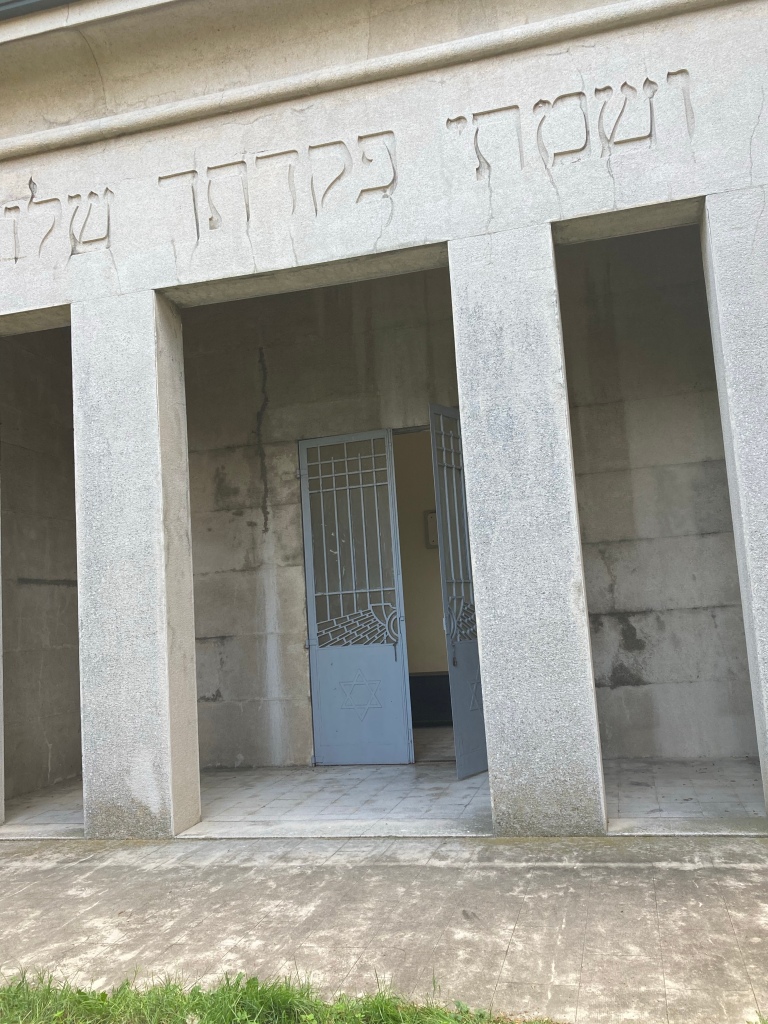



The Jewish Cemetery in Ferrara is a place of pilgrimage these days, for two reasons. Firstly it is the burial place of Giorgio Bassani, the great Italian author, poet, editor and television executive. He was a popular 20th century Italian intellectual who wrote numerous books about his beloved home town of Ferrara including the magically evocative ‘Garden of the Finzi Contini’ which was made into a film in the 1970s. He was also responsible for publishing ‘The Leopard’ a magnificent novel about the twilight years of the Kingdom of Sicily. All in all Giorgio Bassani was very accomplished. He was also Jewish, born in Bologna and brought up in Ferrara, quite the local hero.
Secondly the cemetery is famous because it bears witness to the terrible events of the Second World War which lead to the deportation of almost all of the Jewish population from the delightful small city of Ferrara to the dreadful concentration camps of Eastern Europe. The vast majority of whom never returned.
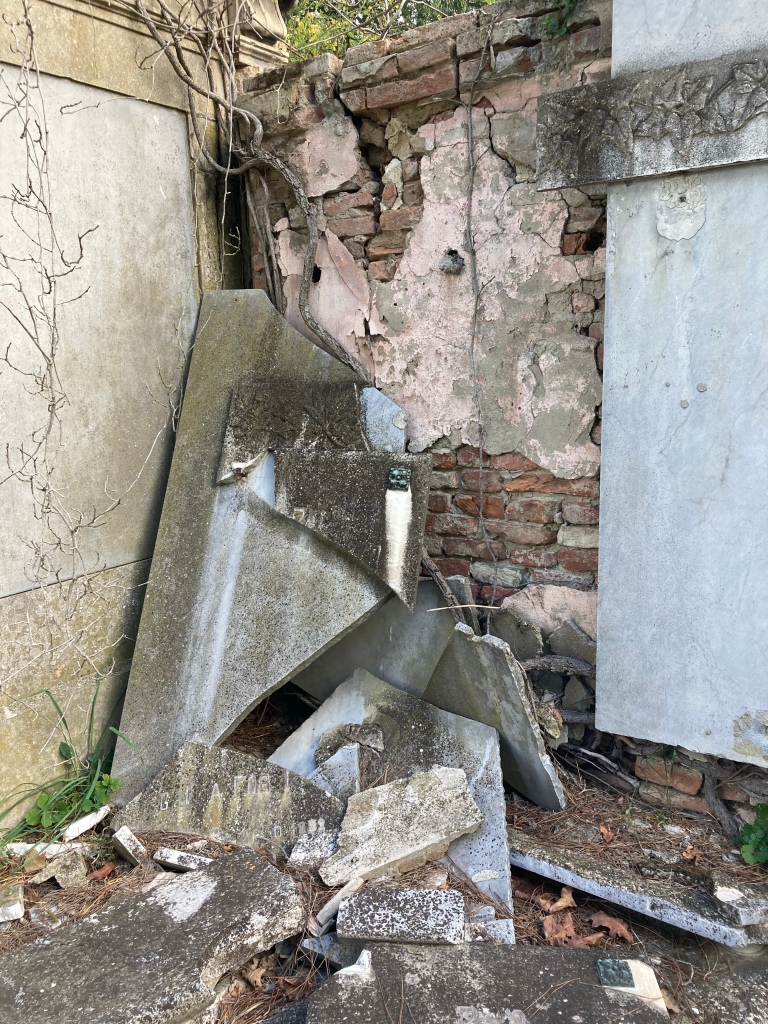

Jewish Cemetery, Ferrara – memorial stones and decay. So sad. www.greyhoundtrainers.com
The fate of the Ferrara Jewish population was particularly tragic because they’d lived in the city for generations. They were fully integrated into the life of this small city and were respected members of the community, often holding important positions in the town. Doctors, lawyers, engineers, pharmacists, business owners and teachers were just some of the professions diligently practised by the Jewish citizens of Ferrara. Many of the families could trace their ancestors back for hundreds of years. In fact a glance at the tombstones reveals family names including Ravenna, Ancona, Pesaro and Modena. Centuries ago it was common for Jewish families newly arrived in Italy to take, as their family name, the name of the port town where they had first set foot on Italian soil. A tradition that dates back to the Middle Ages.
The other unpalatable fact about the Jewish families of Ferrara is that they nearly survived the war. This is the saddest part of the story. The Second World War started in 1939 and was over by the summer of 1945. The awful truth is that Italian Jews from Ferrara were being transported to the concentration camps as late as December 1944, when the Allied Forces had already landed in Sicily and at Salerno and were making their way north up the Italian peninsula. The idea that Italy was being liberated from the south whilst, at the same time, the Jewish families of Ferrara were being removed from their homes and put on trains-of-no-return always sends shivers through my entire body. It’s hard to believe that they nearly survived, another 6 months and the war was over. BUT they didn’t survive and there was almost nobody left to tend the graves in the cemetery.
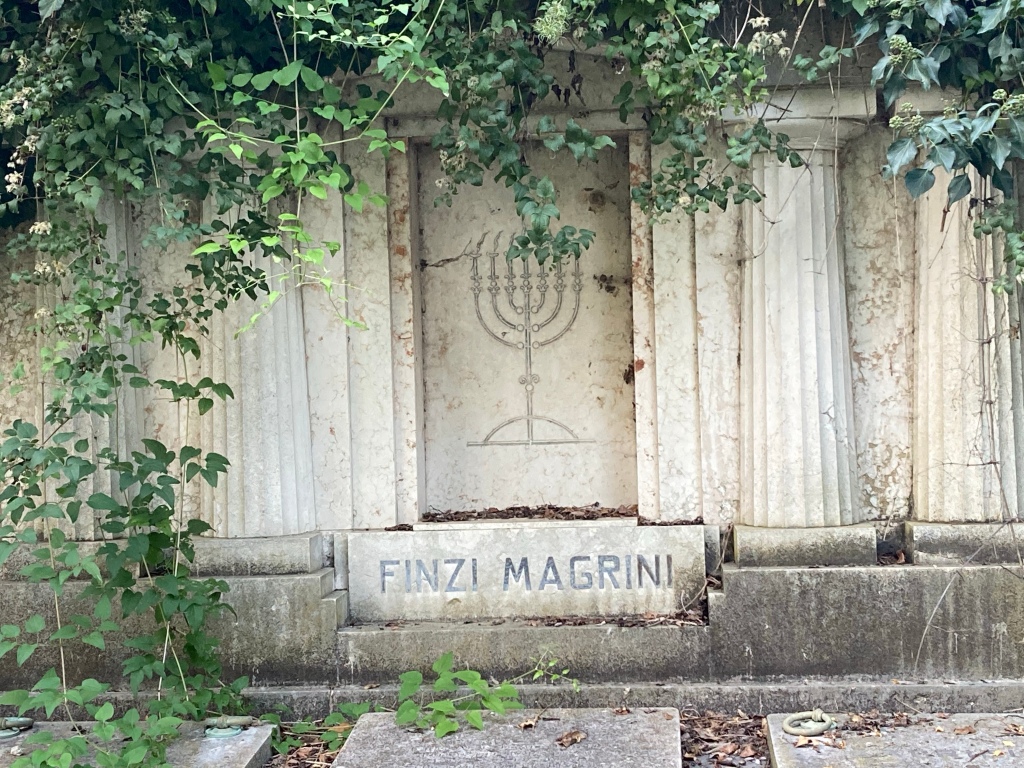
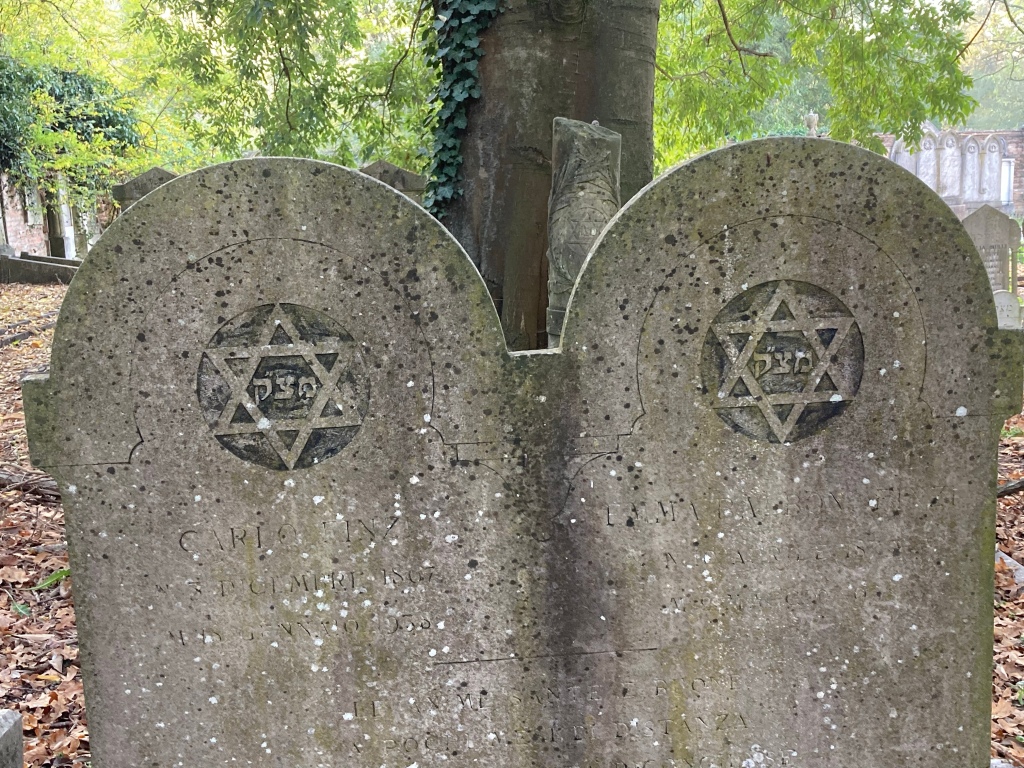

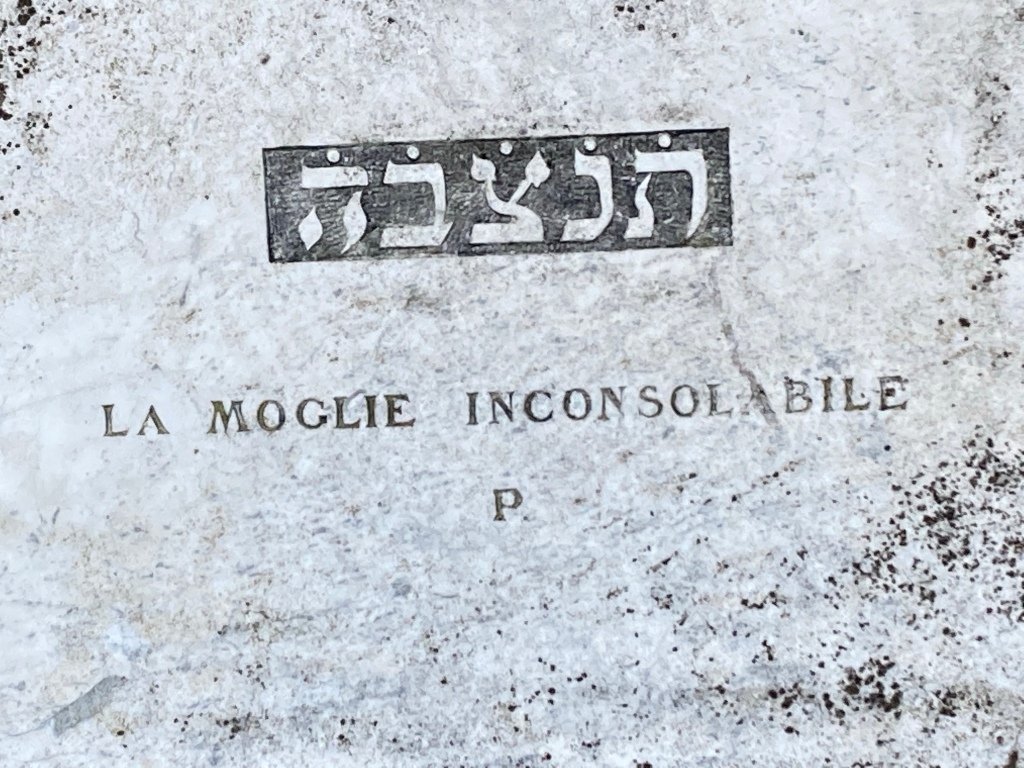
La Moglie Inconsolabile P. A poignant inscription – ‘An unconsolable wife’ – P (Patrizia)?
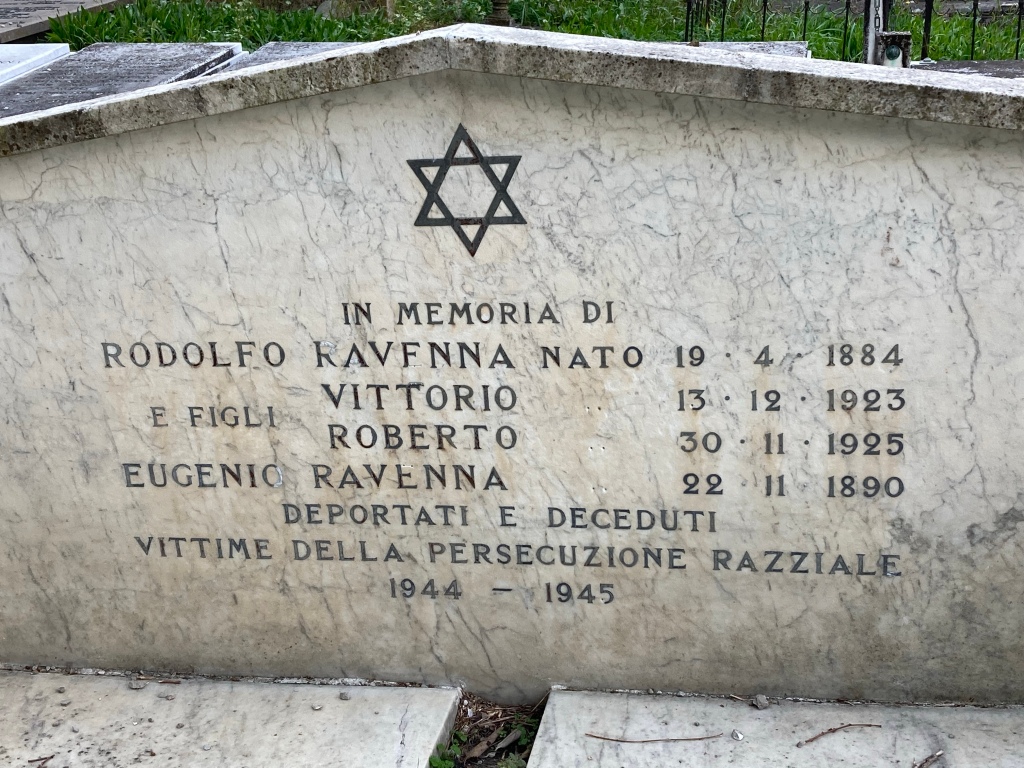
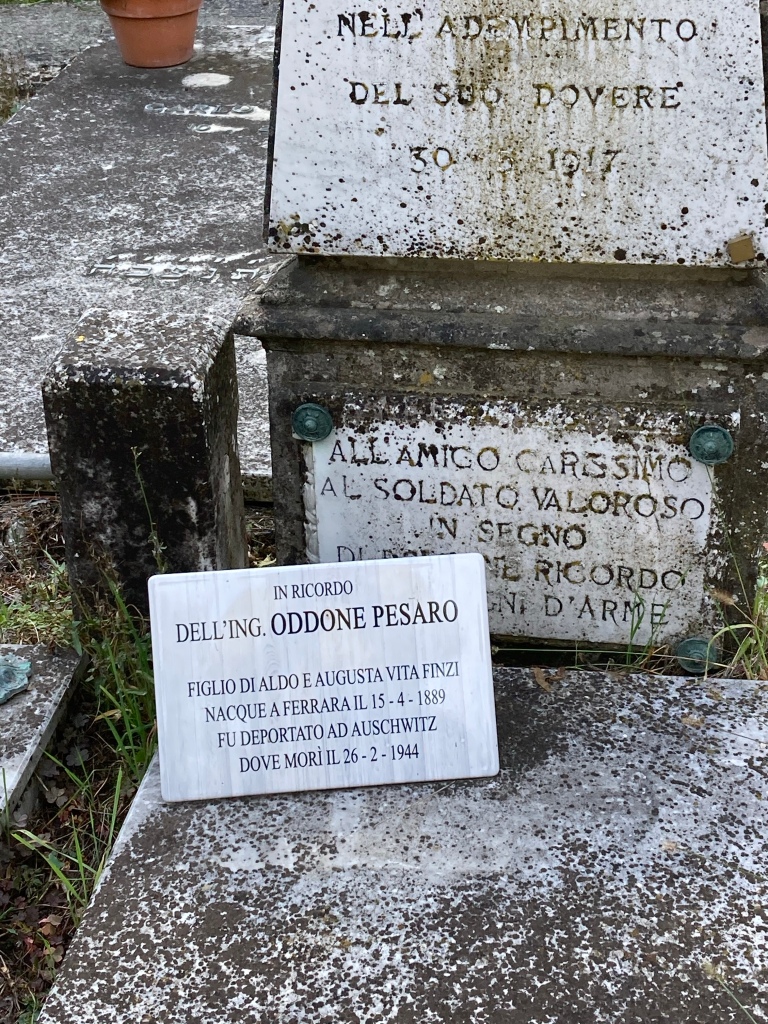
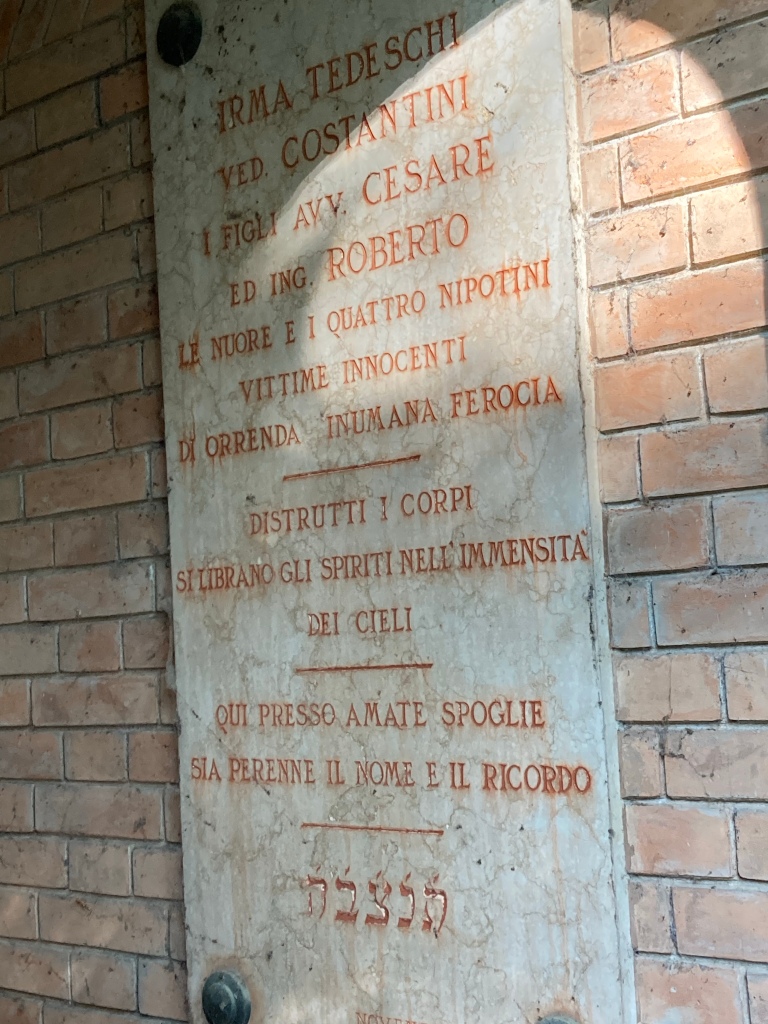

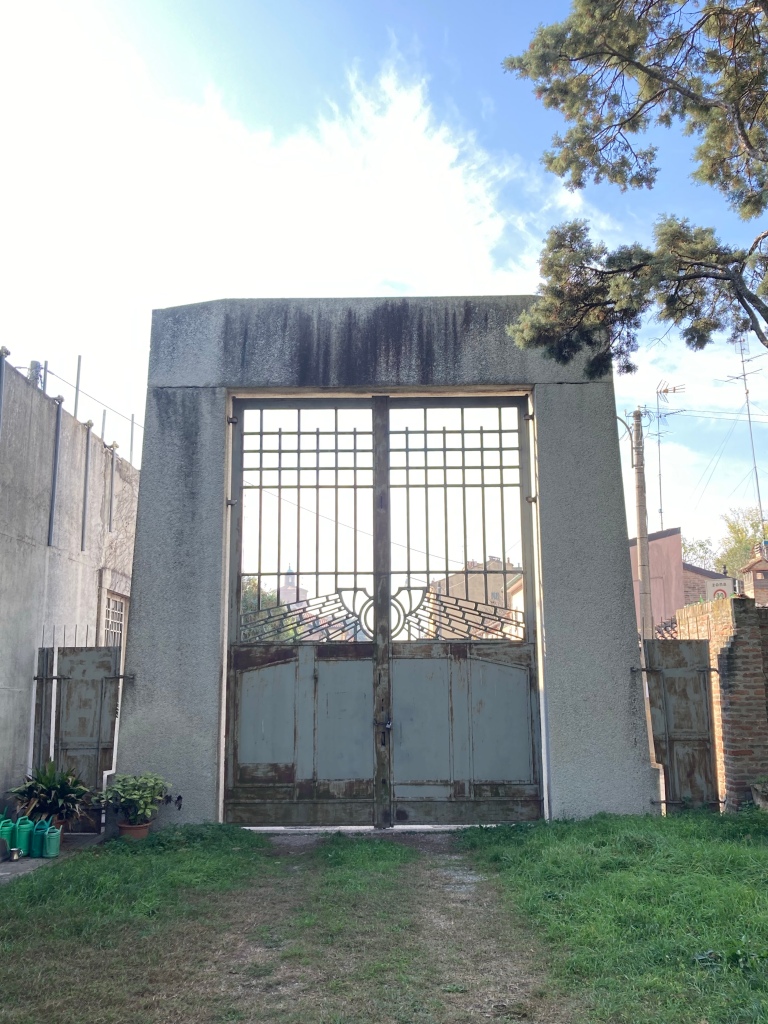
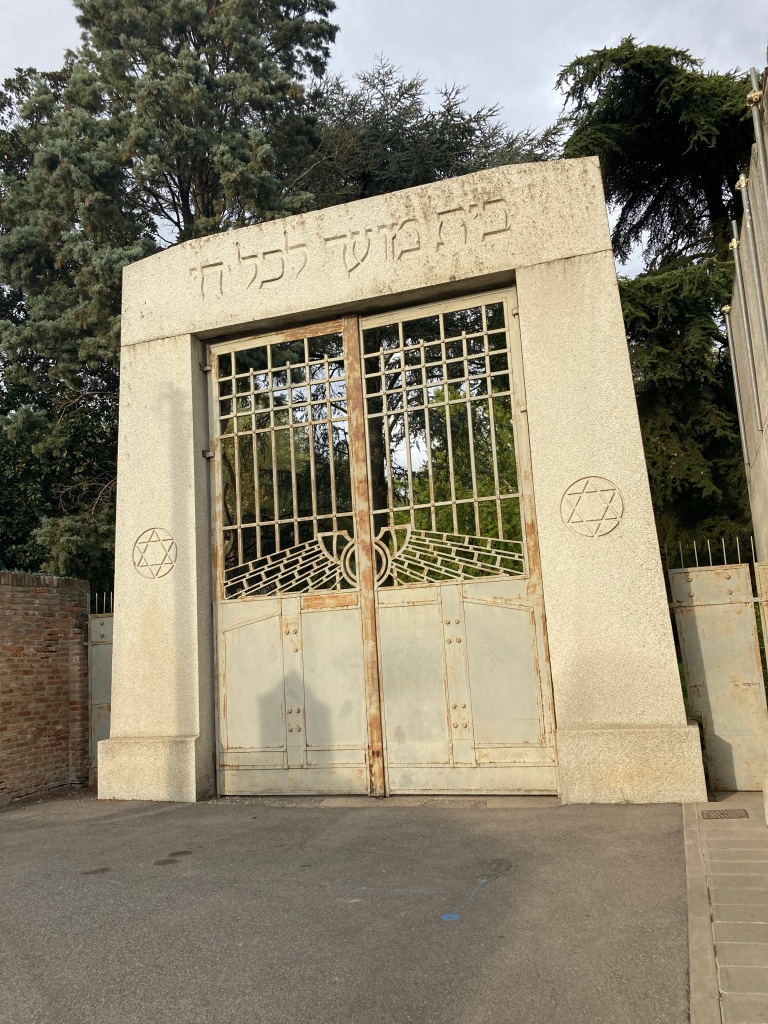


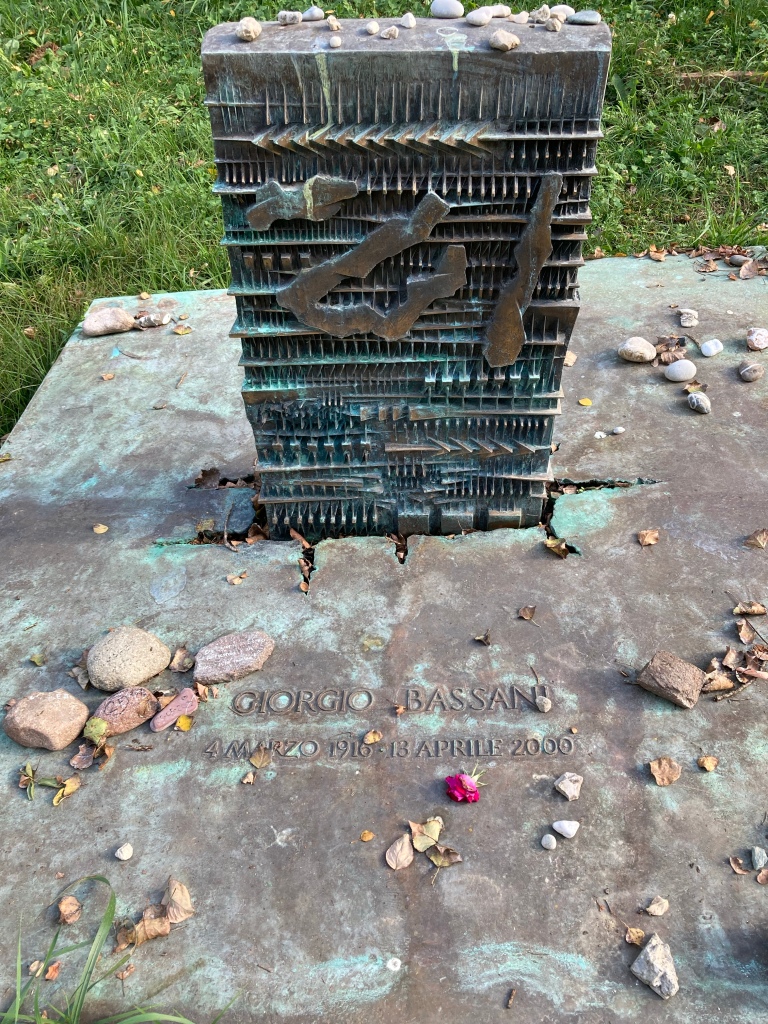
For many years the ‘Custodian’ at the cemetery was an elderly lady called Mara Pazzi. She died just a year or so ago. I wonder if anyone ever thanked her for her years of loyal service. Of course I wrote about her – here’s the article: La Custode – The Guardian
There’s a new way of commemorating Jewish individuals now – it started in Germany in 1992 and was the idea of Gunter Demnig. The Stolpersteine project aims to remember and commemorate Jewish people at the last place they lived or worked or studied, before their liberty was taken from them. A stolpersteine which translates as a ‘stumble stone’ is a concrete cube, 10 cms square, with a brass plaque on the top surface. The plaque is inscribed with the name of the person who lived at a particular address, their date of birth, date of death and their place of death. This idea of memorialising the victims of the holocaust has really caught the attention of many italians who have embraced the idea of remembering the Jewish community in towns like Ferrara, Venice, Padova and Rome. Two examples of stolpersteine are shown below. To read more about the ‘stolpersteine project’ here’s a link to the article I wrote on this emotional and enthralling subject: A lasting memory…


I suppose the only way to conclude an article like this is with the words from the mausoleum in the Jewish Cemetery of Ferrara ‘Polvere sei e alla polvere tornerai’ in other words ‘You are dust and you will return to dust’. A humbling thought on this autumnal morning.
October 2024

